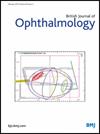眼底摄影、光学相干断层扫描和多焦视网膜电图预测高度近视白内障患者术后视力的比较疗效。
IF 3.5
2区 医学
Q1 OPHTHALMOLOGY
引用次数: 0
摘要
目的比较白内障摘出前眼底摄影、光学相干断层扫描(OCT)和多焦视网膜电图(mfERG)对高度近视合并白内障患者白内障摘出后3个月最佳矫正视力(BCVA)的预测效果。方法回顾性队列研究纳入58例高度近视白内障手术患者。术前评估包括基于元病理性近视分类的眼底摄影黄斑病变分级;通过OCT和mfERG参数评估视网膜外结构完整性,特别是椭球区(EZ)状态,包括P1响应密度和五个同心圆的隐式时间。术后3个月记录BCVA。统计分析包括Pearson相关、多元线性回归和受试者工作特征曲线分析,评价各模型及组合模型之间的关系和预测能力。结果共纳入58只眼,平均年龄62.7±10.0岁。术前BCVA、近视黄斑病变分级、EZ状态、中心mfERG参数均与术后BCVA有较强相关性(均p<0.001)。在多元线性回归模型中,术前BCVA (β=0.270, p<0.001)、近视黄斑病变分级(β=0.075, p=0.029)、EZ状态(β=0.093, p=0.032)和中央mfERG P1振幅密度(β=-0.003, p=0.013)均为术后BCVA的显著独立预测因子。基于oct的模型曲线下面积(AUC)最高(AUC=0.875)。合并所有变量的组合混合模型的预测精度最高(AUC=0.934)。结论术前评估眼底形态、oct显微结构和视网膜功能是高度近视白内障术后视力预后的独立预测指标。本文章由计算机程序翻译,如有差异,请以英文原文为准。
Comparative efficacy of fundus photography, optical coherence tomography and multifocal electroretinography in predicting postoperative visual acuity in highly myopic cataract patients.
AIMS
To compare the predictive efficacy of precataract extraction fundus photography, optical coherence tomography (OCT) and multifocal electroretinogram (mfERG) in determining 3-month postcataract extraction best-corrected visual acuity (BCVA) in patients with high myopia complicated by cataracts.
METHODS
This retrospective cohort study included 58 highly myopic eyes that underwent cataract surgery. Preoperative assessments included macular lesion grading from fundus photography based on the META-pathologic myopia classification; assessment of outer retinal structural integrity, specifically ellipsoid zone (EZ) status, via OCT and mfERG parameters, including P1 response density and implicit time from five concentric rings. Postoperative BCVA was recorded at 3 months. Statistical analyses included Pearson correlation, multiple linear regression and receiver operating characteristic curve analysis to evaluate the relationship and predictive power of each modality and a combined model.
RESULTS
The study included 58 eyes with a mean age of 62.7±10.0 years. Preoperative BCVA, myopic maculopathy grading, EZ status and central mfERG parameters all showed strong correlations with postoperative BCVA (all p<0.001). In the multivariate linear regression model, preoperative BCVA (β=0.270, p<0.001), myopic maculopathy grading (β=0.075, p=0.029), EZ status (β=0.093, p=0.032) and central mfERG P1 amplitude density (β=-0.003, p=0.013) were all significant independent predictors of postoperative BCVA. An OCT-based model demonstrated the highest area under the curve (AUC) among single modalities (AUC=0.875). A combined mixed model incorporating all variables achieved the highest predictive accuracy (AUC=0.934).
CONCLUSION
Preoperative assessments of fundus morphology, OCT-derived microstructures and retinal function are all valuable, independent predictors of visual outcomes after cataract surgery in highly myopic eyes.
求助全文
通过发布文献求助,成功后即可免费获取论文全文。
去求助
来源期刊
CiteScore
10.30
自引率
2.40%
发文量
213
审稿时长
3-6 weeks
期刊介绍:
The British Journal of Ophthalmology (BJO) is an international peer-reviewed journal for ophthalmologists and visual science specialists. BJO publishes clinical investigations, clinical observations, and clinically relevant laboratory investigations related to ophthalmology. It also provides major reviews and also publishes manuscripts covering regional issues in a global context.

 求助内容:
求助内容: 应助结果提醒方式:
应助结果提醒方式:


